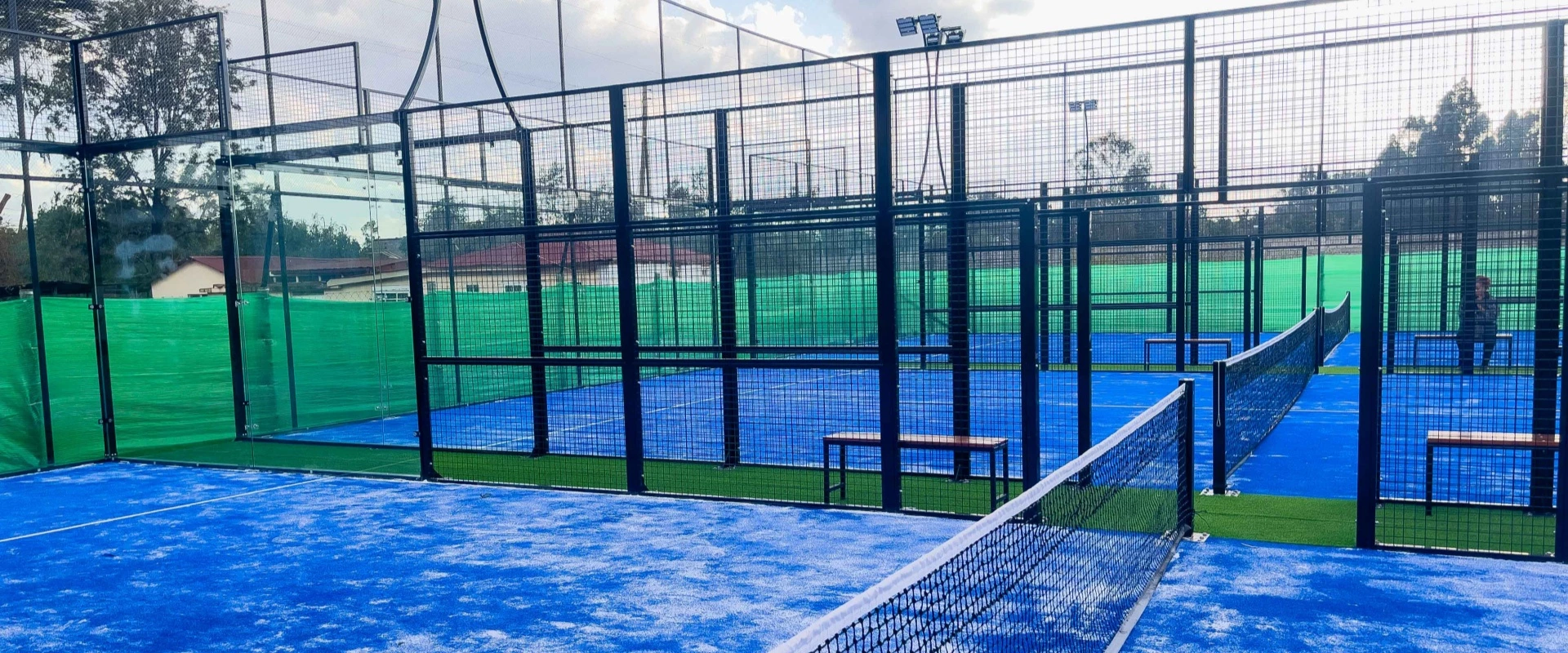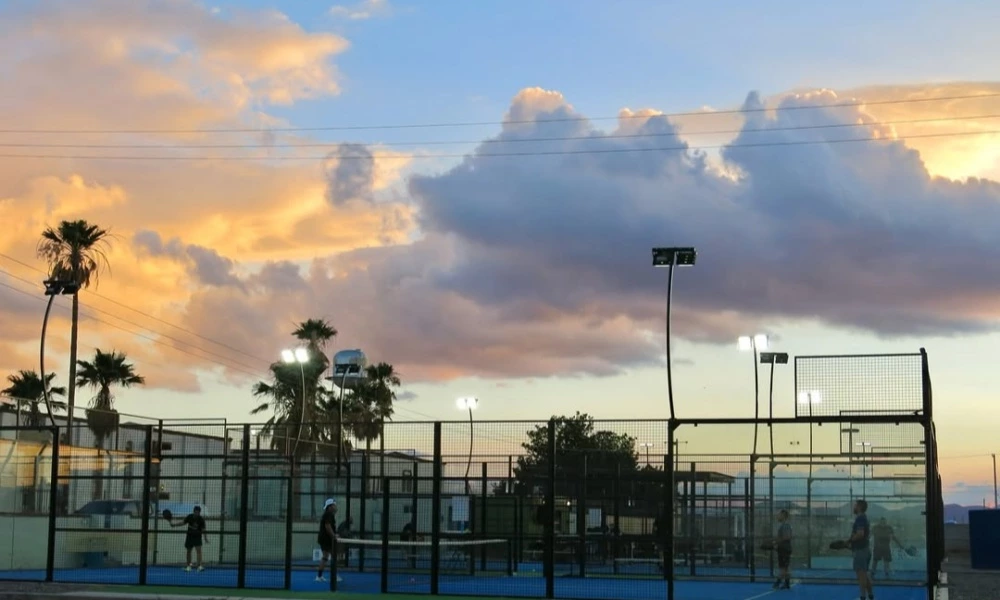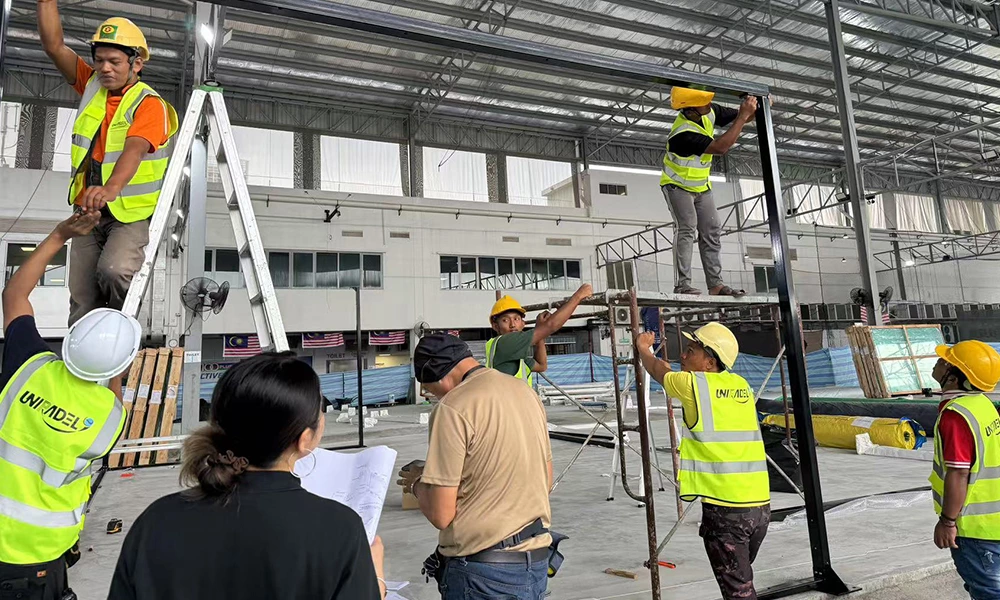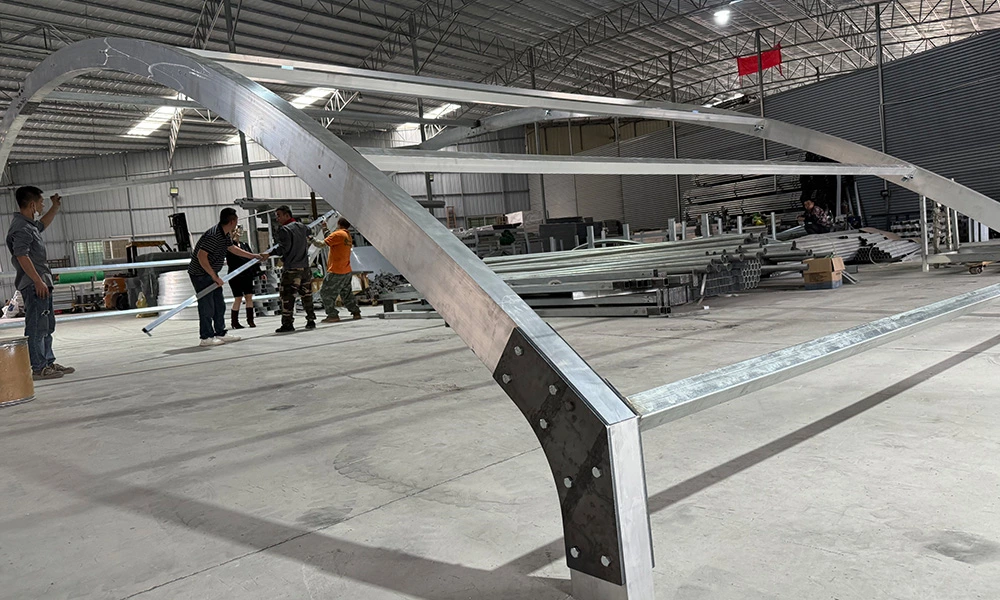Padel Turf: The Best Padel Court Playing Surface
Imagine walking into a modern padel court and feeling unparalleled comfort with every swing, precision and stability with every bounce of the padel ball, and ease after long matches. That’s the beauty of high-quality artificial grass, which is fast becoming the preferred choice for padel courts exported by GZUNIPADEL to the world. As the sport grows in popularity, more and more venue operators and sports enthusiasts are realizing that artificial turf offers more advantages over traditional concrete or clay courts. GZUNIPADEL is at the forefront of the industry in artificial turf designed specifically for padel.
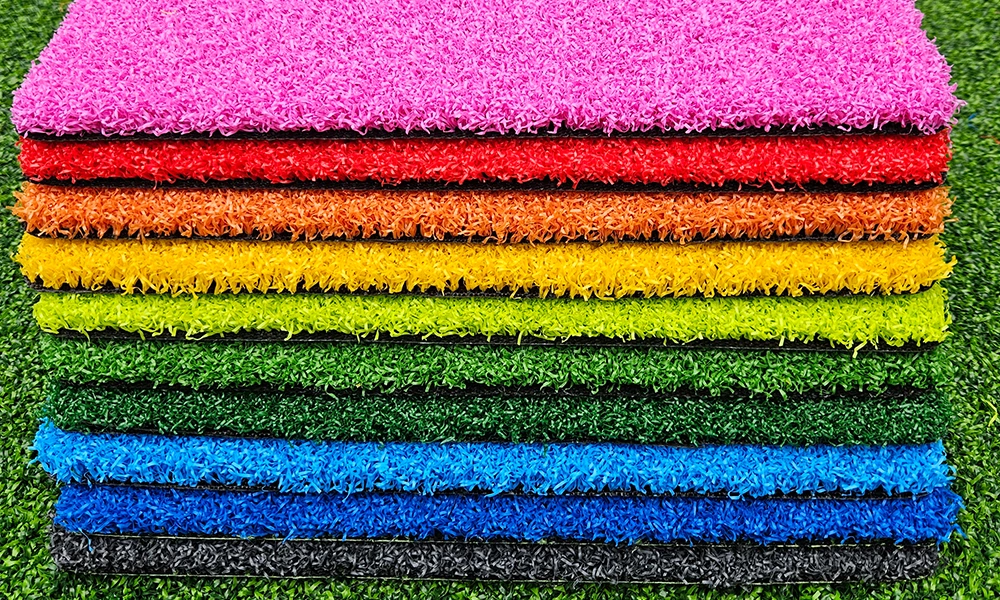
Padel Grass Information Details
Product Information
Model UNI-Padel KDK
Color Blue/Green
Width 4.0m/2.0m
Application Padel/Tennis field
Grass Pile
Pile grass description Monofilament
Raw material Polyethylene
Dtex 9500
Thickness 155±10μm
Width 0.9±0.1mm
Pile Weight 1525g/m2 ±10%
Grass
Pile height 12mm±1mm
Stitches per 10cm 3/16inch
Stitch rate 25±1 (Needle/10cm)
Stitches per m2 52500±100 Needle/m2
Backing material
Primary backing PolyPropylene
Weight 275g/m2
Secondary backing Cloth Backing with Black Latex
Weight 1050g/m2±10%
Total carpet weight 2850g/m2±10%
Features
Water permeability of carpet >180mm/hr
Colour-faded Level Gray light≥4
UV stability >5000hrs
Carpet tuft withdrawal ≥30N
Stabilising Infill | Application rate (kg/m2) 6-8.5kg
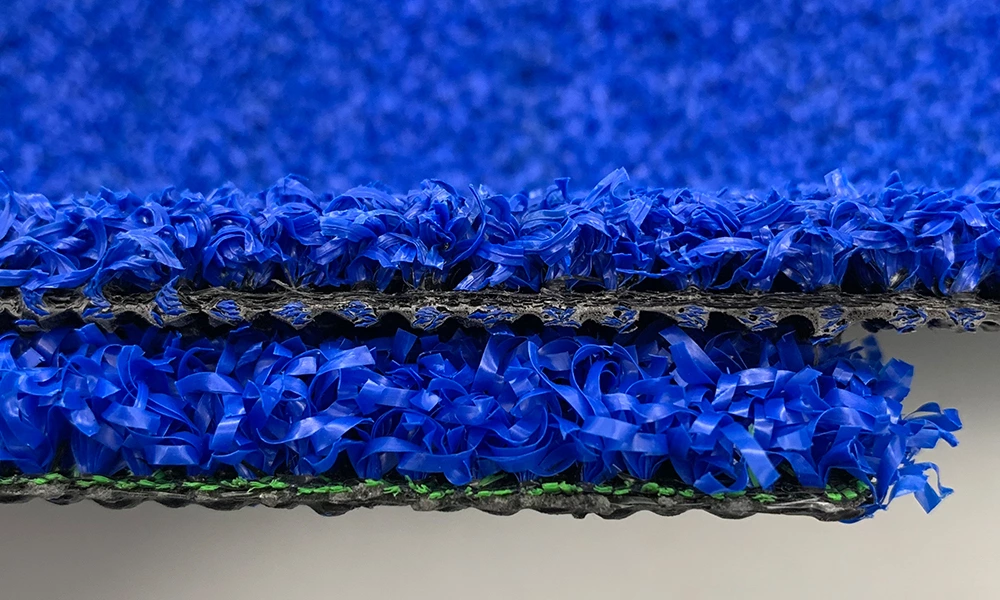
Why choose high-quality artificial turf as the surface covering for padel courts?
There are two main reasons:
1. Excellent durability and stability
Artificial turf has excellent durability and stability. Compared with natural grass, artificial turf can withstand the impact of weather changes and frequent use, maintain its flat and consistent surface, and ensure the safety and comfort of athletes during the game. In addition, the maintenance cost of artificial turf is relatively low, and it does not require regular watering, fertilization or mowing, which greatly reduces the workload and cost of maintenance.
2. Provide good rebound and sports performance
Artificial turf can provide good sports performance. It is designed with the needs of athletes in mind, can effectively reduce friction, reduce the risk of sports injuries, and protect knees and ankles. When playing padel sports, artificial turf provides a good rebound effect, ensures the accuracy of ball speed and rotation, and enhances the fun and competitiveness of the game.
3. Provide scientific elasticity, better than cement and asphalt foundations
It should be noted that ground foundations such as cement, asphalt or uneven soil are not suitable for padel courts. These foundations lack elasticity, may cause athlete injuries, and have difficulties in drainage and turf maintenance, which affects the overall experience of the game.
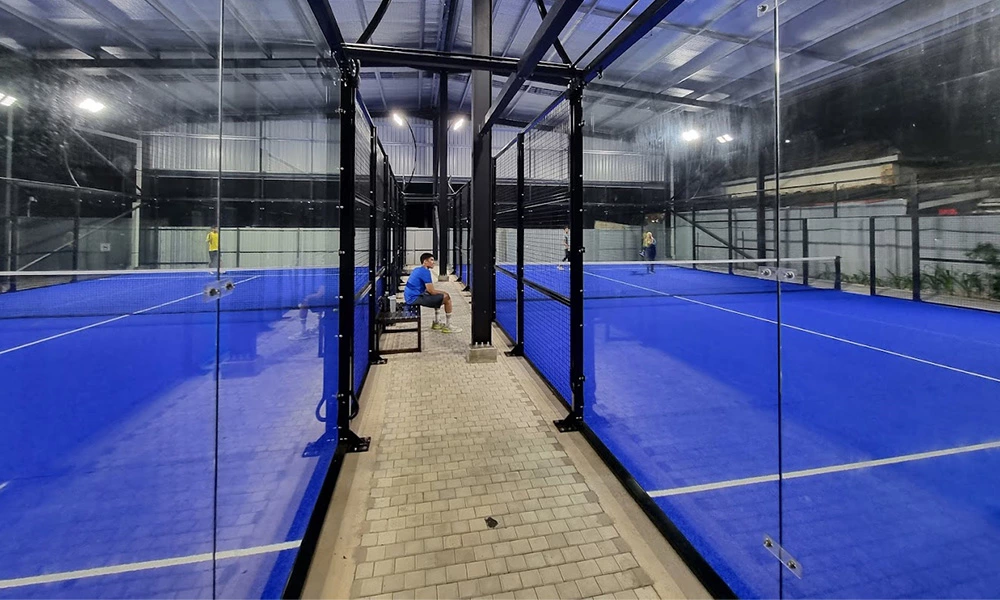
What makes GZUNIPADEL artificial turf the best choice for padel tennis surface covering?
Turf quality affects the court experience
People are increasingly appreciating the opportunity to play sports, and padel is quickly becoming popular as a popular sport. For a perfect padel stadium, the choice of lawn is crucial. In this regard, the GZUNIPADEL brand is an indispensable choice with its top turf quality and diverse color options.
Our turf is designed for international competitions
The turf used by GZUNIPADEL is of the highest quality and is specially designed for the highest level of international competitions. This artificial turf is made from special 10mm textured polyethylene fibers that are UV and frost fade resistant, ensuring the durability and beauty of the course.
A wide variety of color options
But what makes GZUNIPADEL unique is not only its high-quality materials, but also its rich and colorful color choices. In addition to traditional green lawns, GZUNIPADEL also offers a variety of colors to choose from and can even be customized according to needs. The most common options include blue, red and black, adding a touch of flair and personality to the court.
The first choice for professional competitions and leisure entertainment
Whether it is hosting professional competitions or leisure entertainment, the stadium that chooses GZUNIPADEL lawn will become people's first choice. Its high-quality materials and colorful color options bring more possibilities to the court, allowing athletes to sweat and enjoy padel sports in a comfortable and beautiful environment. GZUNIPADEL makes every game a visual and sports feast.
UNIPADEL teaches you how to install padel court turf?
Here are the detailed steps for installing padel grass at UNIPADEL:
Roll A Installation Steps
Dimensions: 4.05m x 20.2m
Cutting: Cut roll A into 2 rolls and install in the blue area.
Turf Width Distribution: Each roll is 4.05m wide and contains:
Blue area: 3.075m
White border: 0.05m
Blue area: 0.925m
During installation, ensure that the blue area of the lawn is precisely aligned with the blue area and the white part of the edge is neatly processed.
Roll B Installation Steps
Dimensions: 4.05m x 24m
Cutting: Cut roll B into 2 rolls and install in the green area.
During installation, ensure that the green area of the lawn is completely consistent with the green area of the field.
Roll C Installation Steps
Dimensions: 2m x 14.5m
Installation Location: Install in the orange area.
Lawn width distribution: Each roll is 2m wide, including:
Blue area: 0.975m
White border: 0.05m
Blue area: 0.975m
Overlapping part processing: The overlapping part of the blue area will be trimmed neatly after installation.
Through the above steps, ensure that the lawns in each area can be laid accurately to the designated location, achieving a beautiful and professional effect.
How much does padel artificial grass cost?
Standard Size and Artificial Turf Requirements
The standard padel court size is 20m x 10m, and the maximum artificial turf requirement in the playing area is 200m2. This size includes all playing lines and the field area, and is the standardized international padel court construction specification.
Artificial Turf Price Range
The price of artificial turf for padel courts varies depending on the manufacturer, turf type, fiber structure and quality. The overall construction cost range is usually between $9,500 and $9,800, of which the artificial turf part costs approximately:
Price per square meter: $7.5 to $9
Price per square foot: $0.69 to $0.83
What other padel court flooring options are available?
Natural grass
Pros:
Visual appeal: A properly maintained natural grass court is green and highly ornamental.
Friendly shock absorption: Natural grass is usually softer, which helps to reduce pressure on joints and makes sports more comfortable.
Cons:
High maintenance costs: Frequent watering, mowing and pest control are required, which is much more expensive than other flooring materials.
Unstable field condition: The field quality fluctuates greatly due to weather and maintenance, which may affect the playing experience.
Limited use time: Dew or rain can make natural grass slippery, so special attention needs to be paid to playing time and weather conditions, which may limit the frequency of field use.
Polypropylene or acrylic flooring
Pros:
Easy to manage: This synthetic material can create a flat and smooth field, ensuring a more even bounce of the ball and a more stable playing experience.
Easy to maintain: Especially for indoor fields, polypropylene or acrylic surfaces are durable and easy to clean daily, so they can be used all year round.
Cons:
Lack of cushioning: Compared to turf, these surfaces are harder and have a greater impact on players' joints, which may increase discomfort and risk of injury.
Poor grip and shock absorption: Synthetic surfaces are more slippery and may limit quick changes of direction or sudden stops, affecting the smoothness of the game.
Concrete or asphalt floors
Pros:
Increased durability: If the surface is covered with a synthetic coating, it can not only reduce wear, but also adjust the grip and ball bounce effect as needed.
Cost-friendly: Concrete and asphalt materials are relatively cheap and affordable during the initial construction stage.
Cons:
Long-term cost increase: Over time, cracks and unevenness may increase the need for maintenance, leading to gradually increasing costs, especially for outdoor venues.
Lack of safety: These surfaces absorb heat seriously and may become unsuitable for sports in hot environments. They also have poor shock absorption protection for joints and greater friction when falling.
Unstable performance: Without the right coating, hard surfaces may cause irregular ball bounces, increase the difficulty of the game, and fewer players are familiar with such venues.
Generally speaking, the most suitable surface for padel courts is artificial grass!!
